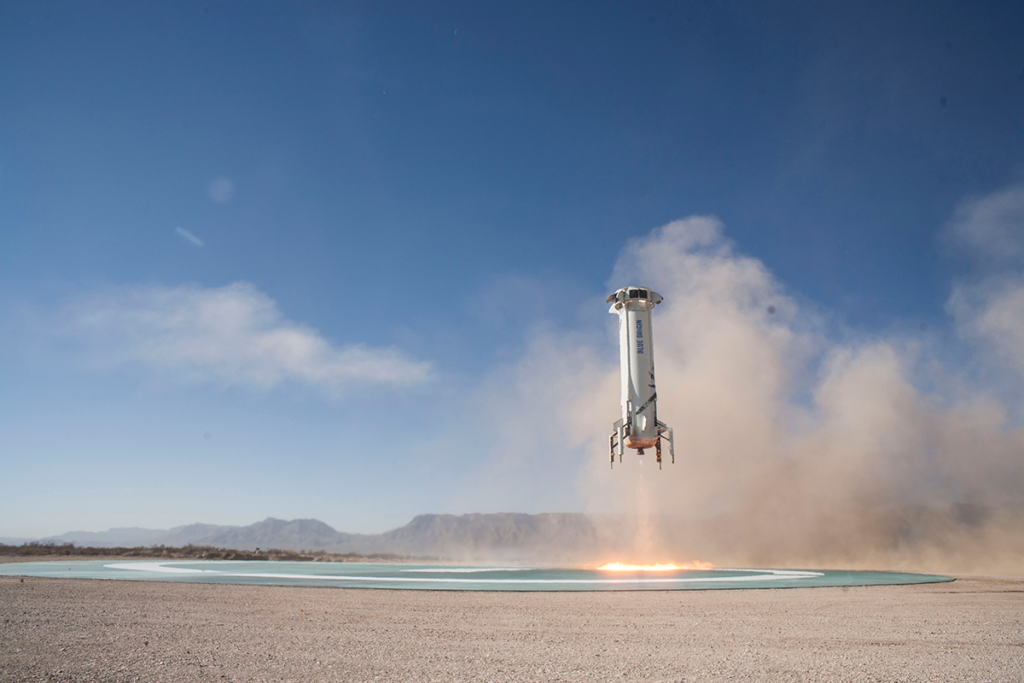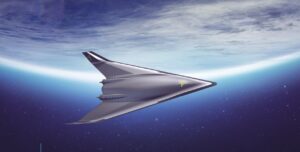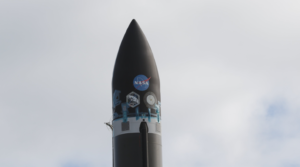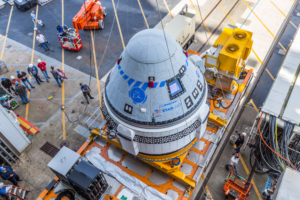
Blue Origin Will Soon Launch New Shepard Again After Its Anomaly
Close to a year ago in September 2022, during an uncrewed launch of Blue Origin’s New Shepard rocket, an engine failure caused the capsule to abort and the booster to crash. Even though this specific mission had no humans aboard, this mishap was still a very big deal considering how often New Shepard does carry crew.
However, after all this time, the company looks to be preparing the rocket for more missions very soon. In just a few weeks we could see New Shepard lift off again. Early this year in March, Blue Origin said there was a structural failure in the vehicle’s BE-3PM engine nozzle caused by temperatures that exceeded its design. This was the core problem and the reason the NS-23 mishap occurred.
What was most concerning to many was the fact that New Shepard had launched so consistently without any issues and then out of nowhere, the 1 main engine fails shortly after lift off. Here I will go more in-depth into the upcoming launch reports, what exactly went wrong originally, what to expect in the next few weeks, and more.
Launching Soon

Just days ago, speaking at the Financial Times’ “Investing in Space” event on June 6, Blue Origin Chief Executive Bob Smith said the company was on the verge of resuming New Shepard launches, pending approval from the Federal Aviation Administration. “We knew very soon after the event what exactly happened,” Smith said, saying that the company has been “working through with the FAA on the process by which we go back to flight.”
Months ago in March, the company said they expected flights to resume soon. This being said, Smith continued by pointing out, “We’re now dotting the i’s and crossing the t’s to get through that, as well as getting our system ready to go fly again. New Shepard, from that standpoint, should be ready to go fly within the next few weeks” he said.
Despite the launch failure, Blue Origin is not only planning on more future uncrewed launches but also crewed ones as well. Earlier this year, Ariane Cornell, vice president of commercial orbit, astronaut, and international sales at Blue Origin commented, “We are still closing out the investigation. We’re working very closely with the FAA. We’re going into very deep, deep detail on that.” She also said that the company was planning to return New Shepard to flight “by the end of this year,” but was not more specific. She noted that the escape system on the vehicle worked “perfectly” on NS-23, a point the company emphasized in its statement about the investigation. In addition, Cornell noted the company had not lost any customers for its crewed flights since the mishap. “Demand continues to be strong,” she said. “We continue to have customers signing up for New Shepard. Some of those even asked to fly an ‘escape’ mission because it seemed so exciting. We have politely declined.”
While the experience for humans on the escape system would most definitely not be fun, it would have kept them safe which is the most important factor. Other recent comments from Gary Lai, the chief architect for New Shepard, also give us a better idea of New Shepard’s future. In one quote he said, “We expect that in the near future, the coming year, suborbital tourism will dominate our flights,” predicting that Blue Origin will support “about a couple” dedicated payload missions a year, the same as it has, even as the number of private astronaut flights grows.
Based on all this information, it looks as if New Shepard is not only returning to crewed missions soon, but the demand has only gone up. Blue Origin is confident that the future of this rocket will mostly revolve around sending humans to the edge of space.
As far as the next mission which could be just weeks away, we can expect a retry of the NS-23 mission. This flight had more than 30 different payloads from a host of different companies and organizations. They will likely get priority and be apart of the upcoming mission. After that, we can expect an increase in crewed launches and missions in general.
New Shepard Mishap

The NS-23 launch appeared to be going normally until about T+1 minutes. The plume from the BE-3 engine that powers the vehicle’s booster changed appearance, and the vehicle then appeared to veer slightly from the vertical. At T+1:05, the capsule’s launch escape motor activated, sending the capsule clear of the booster. The capsule reached a peak altitude of about 11.4 kilometers, then descended, deploying drogue and main parachutes as it would on a normal mission. The capsule touched down near the launch site about five and a half minutes after liftoff.
About 6 months after this incident Blue Origin released an Investigation report. Here they determined that the direct cause of the NS-23 mishap was a thermo-structural failure of the engine nozzle. The resulting thrust misalignment properly triggered the Crew Capsule escape system, which functioned as designed throughout the flight.
Specifically, the NS-23 mishap resulted in the loss of NS Propulsion Module Tail 3. The Crew Capsule escape system worked as designed, bringing the capsule and its payloads to a safe landing at Launch Site One with no damage. As part of the response to the Crew Capsule escape, the Propulsion Module commanded shutdown of the BE-3PM engine and followed an unpowered trajectory to impact within the defined flight safety analysis prediction, resulting in no danger to human life or property. In other words, the booster fell to the ground before impacting it.
After the failure, in accordance with the New Shepard Mishap Investigation Plan, Blue Origin formed a Mishap Investigation Team (MIT), led by members of Blue Origin’s Safety & Mission Assurance organization. The investigation was conducted with FAA oversight and included representatives of the National Transportation Safety Board and NASA’s Flight Opportunities Program and Commercial Crew Office. The MIT stood up debris search and recovery efforts at Launch Site One immediately following the mishap and recovered all critical flight hardware within days. Blue Origin also convened a Mishap Review Board (MRB), which included external non-advocate advisors.
Aided by onboard video and telemetry, flight hardware recovered from the field, and the work of Blue Origin’s materials labs and test facilities, the MIT determined the direct cause of the mishap to be a structural fatigue failure of the BE-3PM engine nozzle during powered flight. The structural fatigue was caused by operational temperatures that exceeded the expected and analyzed values of the nozzle material. Testing of the BE-3PM engine began immediately following the mishap and established that the flight configuration of the nozzle operated at hotter temperatures than previous design configurations.
Forensic evaluation of the recovered nozzle fragments also showed clear evidence of thermal damage and hot streaks resulting from increased operating temperatures. The fatigue location on the flight nozzle is aligned with a persistent hot streak identified during the investigation. The MIT determined that design changes made to the engine’s boundary layer cooling system accounted for an increase in nozzle heating and explained the hot streaks present.
As for the future, Blue Origin is implementing corrective actions, including design changes to the combustion chamber and operating parameters, which have reduced engine nozzle bulk and hot-streak temperatures. Additional design changes to the nozzle have improved structural performance under thermal and dynamic loads.
At full throttle, BE-3PM generates 490 kN (110,000 lbf) thrust at sea level (over a million horsepower). When returning to Earth, it uniquely throttles down to 90 kN (20,000 lbf) enabling a gentle vertical landing on the pad. Like the Space Shuttle’s main engines, BE-3PM uses high-performing liquid oxygen and liquid hydrogen. BE-3PM is designed for operational reusability with minimal maintenance between flights. At the top, the New Shepard Crew Capsule is a pressurized crew capsule that can carry six people, and supports a “full-envelope” launch escape system that can separate the capsule from the booster rocket anywhere during the ascent. The interior volume of the capsule is 15 cubic meters (530 cu ft). The Crew Capsule Escape Solid Rocket Motor (CCE-SRM) is sourced from Aerojet Rocketdyne. After separation from the booster, three parachutes deploy for a soft landing, at approximately 24 km/h (15 mph) for the passengers.
In the 22 flights prior to the NS-23 mishap, the BE-3PM engine along with practically every other part of the rocket had worked just fine. The only exception was the first flight where the booster failed to land on the pad and crashed. Blue Origin is working to make sure no more random anomalies occur during flights and especially when humans are aboard.
Conclusion
Blue Origin should be ready to launch New Shepard once again in only a few weeks from now. This comes after nearly a year’s break for the investigation of the NS-23 mission along with waiting for FAA approval. We will have to wait and see how it progresses and the impact it has on the space industry.



